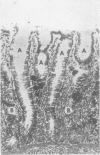Abstract
The length of incubation for 36 eight and 12 week old swine in eight experimental passages averaged 11 days and ranged from five to 24 days. The duration of diarrhea for 24 of these swine averaged 6.4 days and ranged from two to 19 days. The consistent macroscopic lesion was a colitis and, subsequently, a typhlitis. In the swine euthanized on the first day of diarrhea, the colitis was most intense in the coils near the apex of the colon and, frequently, these swine had a hyperemia of the fundus of the stomach. The amount of visible blood in the colon varied. Organisms identified microscopically and ultrastructurally as spirochetes were observed commonly in the feces and the mucosal glands of the colon of swine with a diarrhea, but not in the adjacent mesenteric lymph nodes. These spirochetes which were the most numerous on the first day of diarrhea, could not be isolated and propagated in vitro. Swine which recovered naturally or were medicated at the height of a diarrhea, developed a resistance to swine dysentery. Colon from infected swine remained infectious when stored at -77°C for nine months but not when stored at -16°C. Feces from infected swine were not infectious after lyophilization and storage at -12°C.
Full text
PDF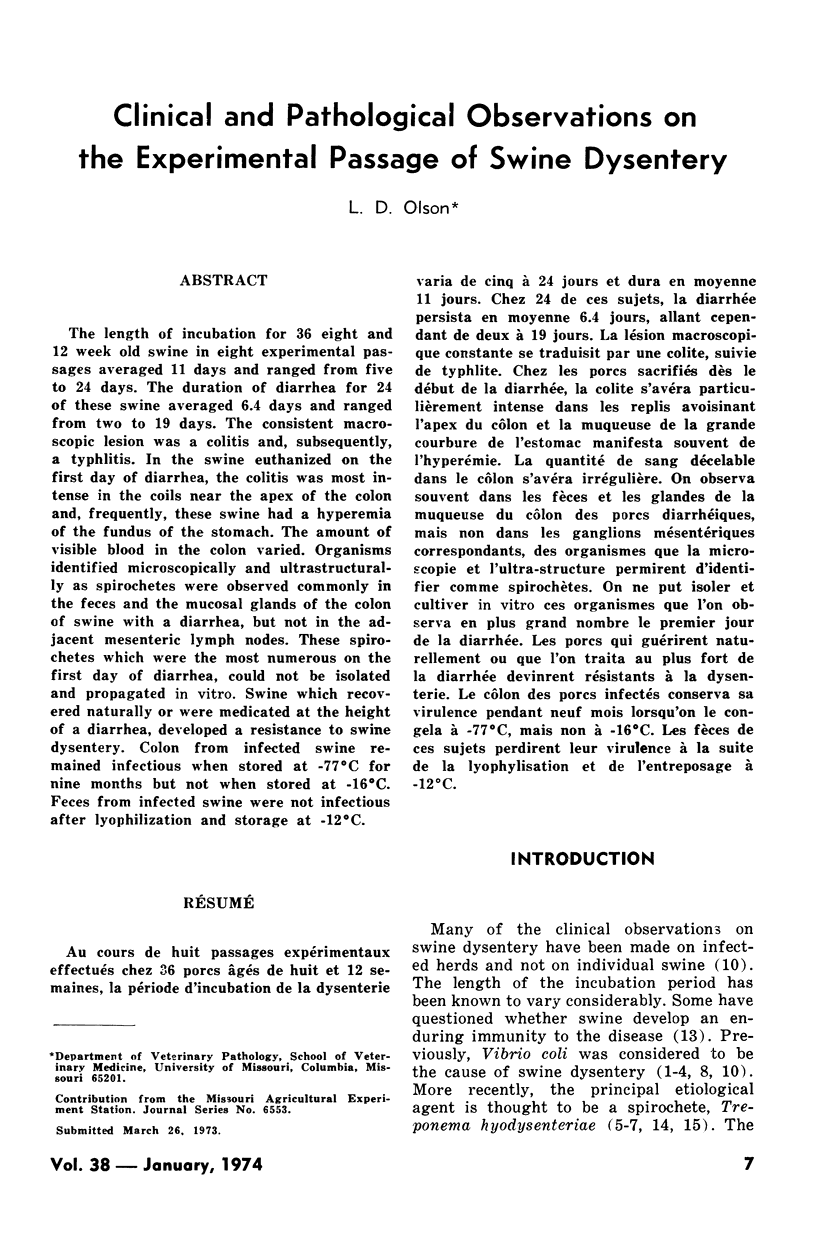

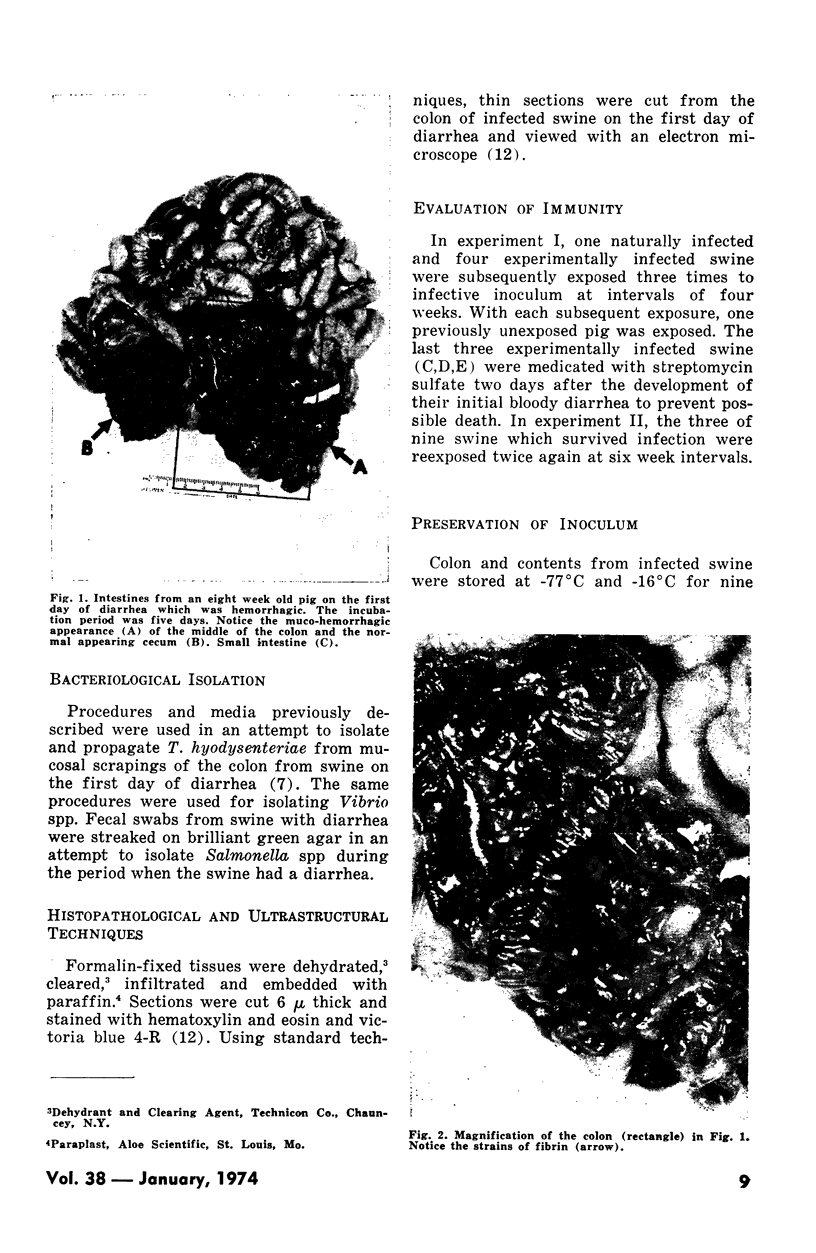
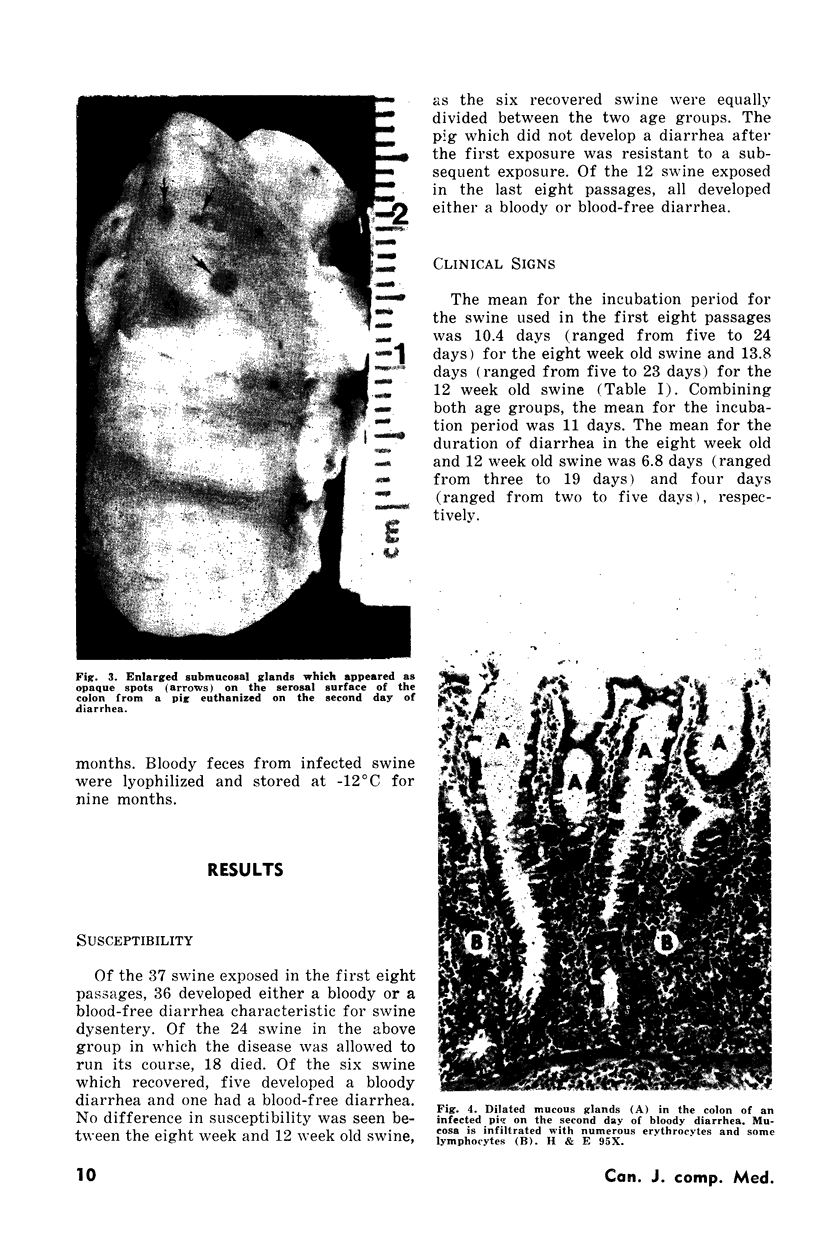
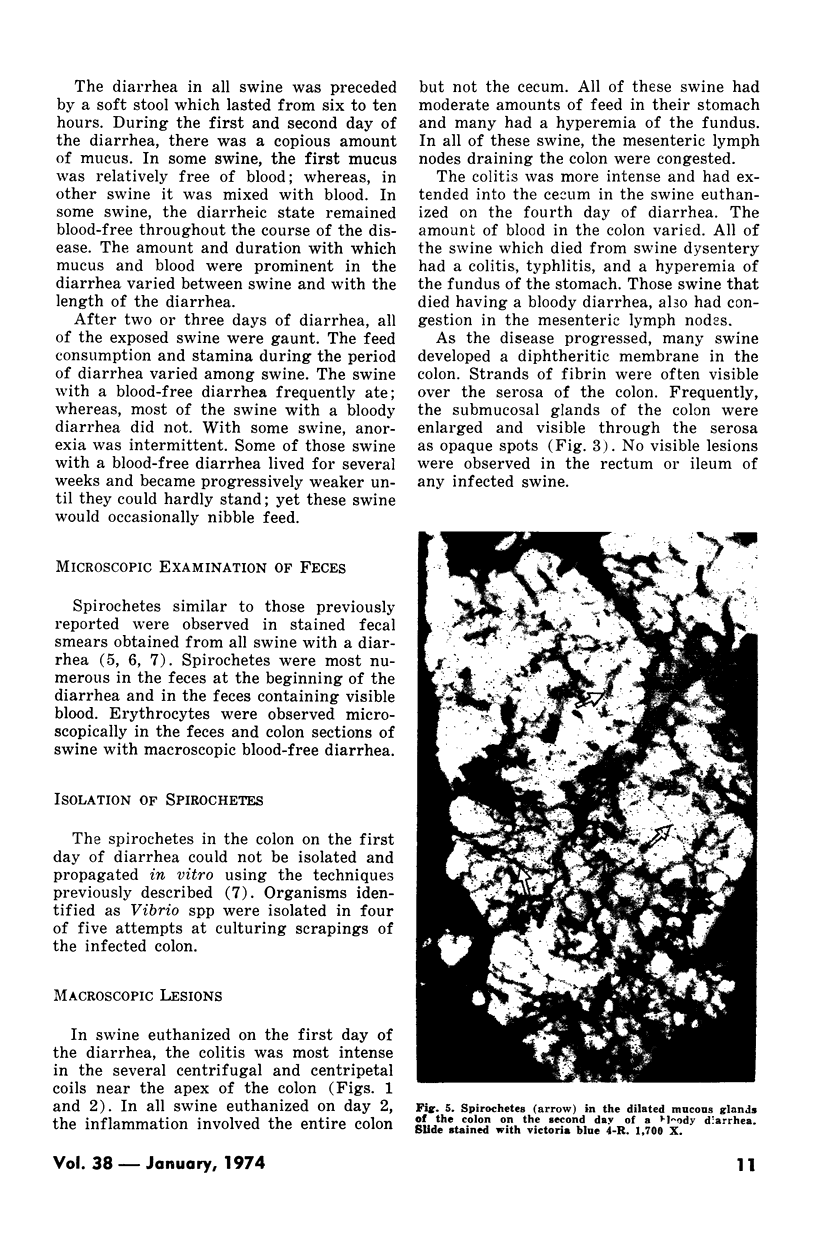


Images in this article
Selected References
These references are in PubMed. This may not be the complete list of references from this article.
- Andress C. E., Barnum D. A. Pathogenicity of vibrio coli for swine. II. Experimental infection of conventional pigs with vibrio coli. Can J Comp Med. 1968 Oct;32(4):529–532. [PMC free article] [PubMed] [Google Scholar]
- Andress C. E., Barnum D. A., Thomson R. G. Pathogenicity of vibrio coli for swine. I. Experimental infection of gnotobiotic pigs with vibrio coli. Can J Comp Med. 1968 Oct;32(4):522–528. [PMC free article] [PubMed] [Google Scholar]
- DAVIS J. W. Studies on swine dysentery. J Am Vet Med Assoc. 1961 May 1;138:471–483. [PubMed] [Google Scholar]
- Glock R. D., Harris D. L. Swine dysentery. II. Characterization of lesions in pigs inoculated with Treponema hyodysenteriae in pure and mixed culture. Vet Med Small Anim Clin. 1972 Jan;67(1):65–68. [PubMed] [Google Scholar]
- Harris D. L., Glock R. D., Christensen C. R., Kinyon J. M. Inoculation of pigs with Treponema hyodysenteriae (new species) and reproduction f the disease. Vet Med Small Anim Clin. 1972 Jan;67(1):61–64. [PubMed] [Google Scholar]
- Harris D. L., Kinyon J. M., Mullin M. T., Glock R. D. Isolation and propagation of spirochetes from the colon of swine dysentery affected pigs. Can J Comp Med. 1972 Jan;36(1):74–76. [PMC free article] [PubMed] [Google Scholar]
- Lussier G. Vibrionic Dysentery in Swine in Ontario-Part II: Morphological, Biochemical and Serological Characteristics of Vibrio Coli. Can Vet J. 1962 Sep;3(9):267–278. [PMC free article] [PubMed] [Google Scholar]
- Lussier G. Vibrionic Dysentery of Swine in Ontario-Part I : 1. Clinical Aspects and Pathology. Can Vet J. 1962 Aug;3(8):228–237. [PMC free article] [PubMed] [Google Scholar]
- Taylor D. J., Blakemore W. F. Spirochaetal invasion of the colonic epithelium in swine dysentery. Res Vet Sci. 1971 Mar;12(2):177–179. [PubMed] [Google Scholar]






